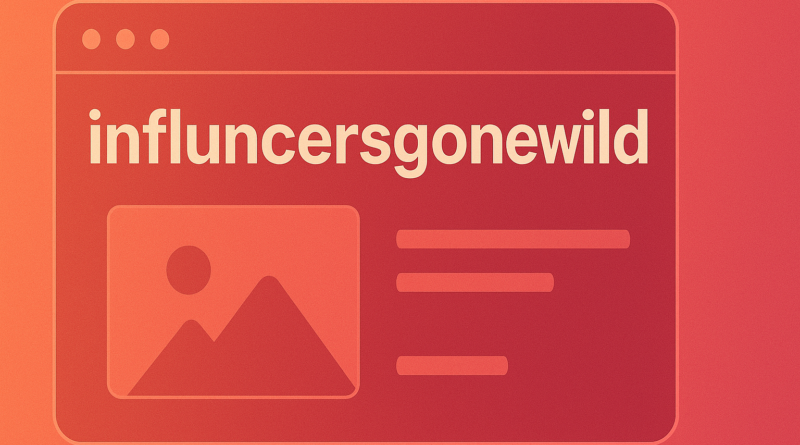influncersgonewild: The Impact of Unchecked Social Media Fame
Introduction
In the digital age, influencers have emerged as powerful figures shaping trends, opinions, and even political outcomes. While many leverage their platforms responsibly, the rise of the “influncersgonewild” phenomenon reveals a darker side of fame. This article delves into its roots, psychological drivers, real-world cases, and the societal consequences of unchecked influencer behavior.
What Is InfluencersGoneWild?
“InfluencersGoneWild” refers to the trend where social media personalities engage in risky, controversial, or unethical acts purely for visibility and engagement. From reckless stunts to misleading endorsements, the goal is often viral fame—regardless of the cost. Unfortunately, such behavior not only damages personal brands but also sets dangerous examples for impressionable audiences.
Why Do Influencers Cross the Line?
Several factors contribute to this phenomenon:
- Social Media Algorithms: Platforms reward engagement. As a result, outrageous behavior often gets more likes and shares than responsible content.
- Dopamine Feedback Loop: Likes, comments, and shares release dopamine, making influencers crave more attention.
- Fear of Obscurity: The influencer market is crowded. To remain relevant, some resort to shock value.
Real-Life Cases of Influencers Gone Wild
1. The Miami Yacht Incident (2025)
Over 30 influencers were rescued after a $4M Lamborghini Tecnomar yacht capsized. Instead of panicking, many filmed themselves for content—more concerned about salvaging their tequila and laptops than their lives. The videos went viral but raised questions about priorities and safety ethics.
2. Lily Phillips’ Controversial Challenge
English OnlyFans model Lily Phillips drew criticism after promoting a video titled “I Slept With 100 Men in One Day.” Though later explained as a documentary, it sparked ethical debates and concern over the normalization of extreme sexual content for clout.
3. Samantha “Wombat Woman” Strable
American influencer Samantha Strable was condemned for smuggling a baby wombat out of the wild in Australia. The viral video led to international outrage, a review of her visa, and widespread condemnation for animal cruelty.
The Broader Impact on Society
Unchecked influencer behavior has tangible consequences:
- Desensitization: Extreme behavior becomes normalized, pushing audiences to accept unethical standards.
- Youth Influence: Teenagers often emulate influencers, making it essential for creators to lead by example.
- Commercial Trust: Brands become wary of partnerships, fearing backlash from problematic behavior.
How Platforms and Authorities Are Responding
- YouTube & Instagram have updated policies to reduce the spread of harmful or misleading content.
- Governments, such as Australia, are beginning to enforce stricter visa and content guidelines for visiting influencers.
- Audiences are becoming more discerning, calling out influencers for irresponsible behavior more frequently.
Can the Trend Be Reversed?
Yes—if stakeholders act collectively:
- Influencers must embrace ethical responsibility.
- Platforms need to prioritize quality over engagement.
- Audiences should reward meaningful content, not just sensationalism.
Best Practices for Ethical Influence
If you’re an influencer—or aspire to be—consider these tips:
- Always fact-check before sharing.
- Be transparent about sponsorships and promotions.
- Avoid stunts that could endanger others, yourself, or animals.
- Collaborate with experts or causes to add credibility to your platform.
Conclusion
InfluencersGoneWild isn’t just a passing trend—it’s a wake-up call. The digital world rewards visibility, but the cost of reckless fame is too high. For influencer culture to mature, ethical responsibility must take center stage. Together—audiences, platforms, and influencers—we can build a more authentic, safe, and respectful online space.

